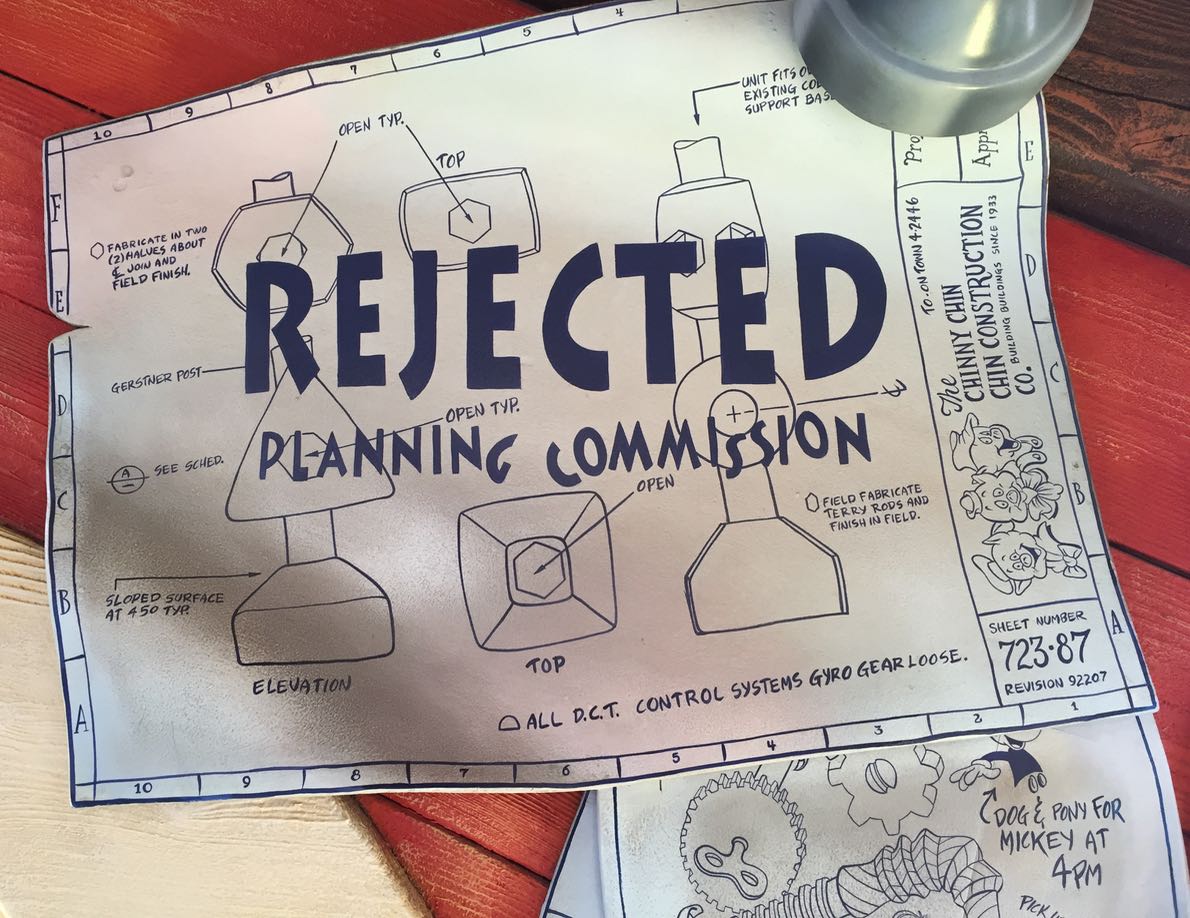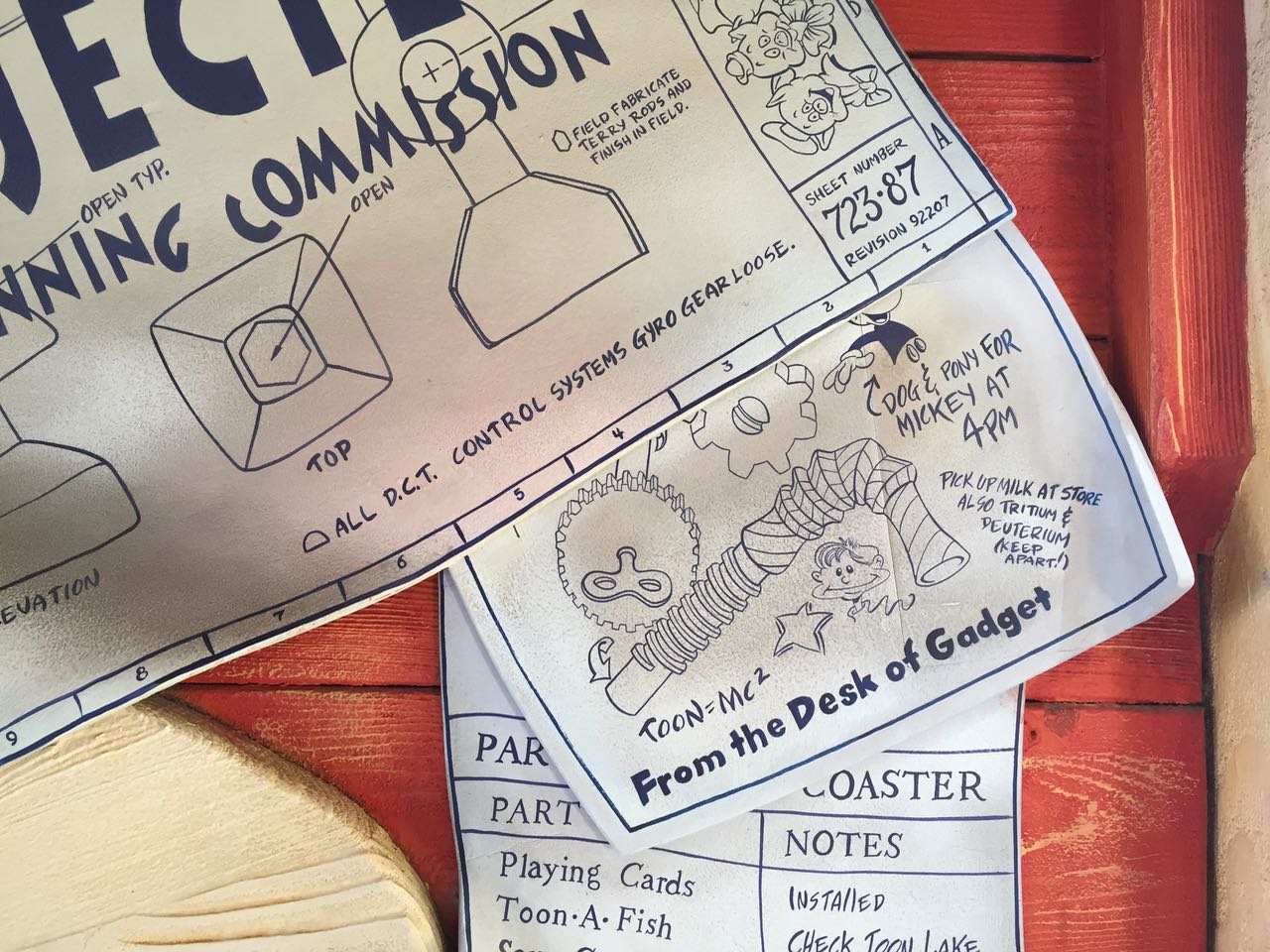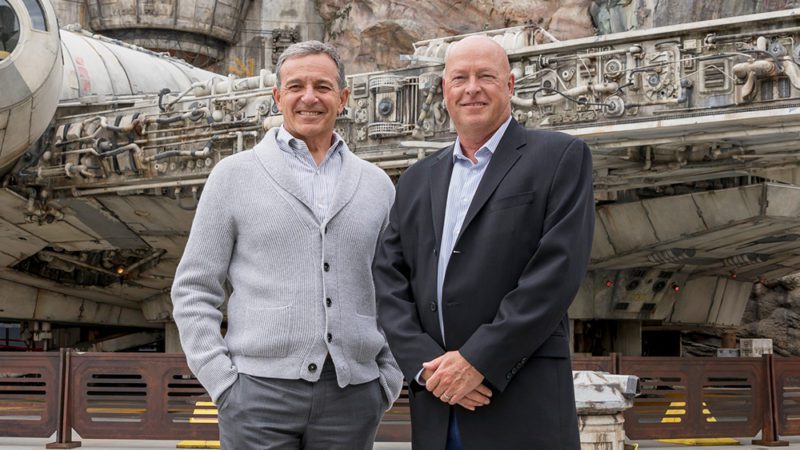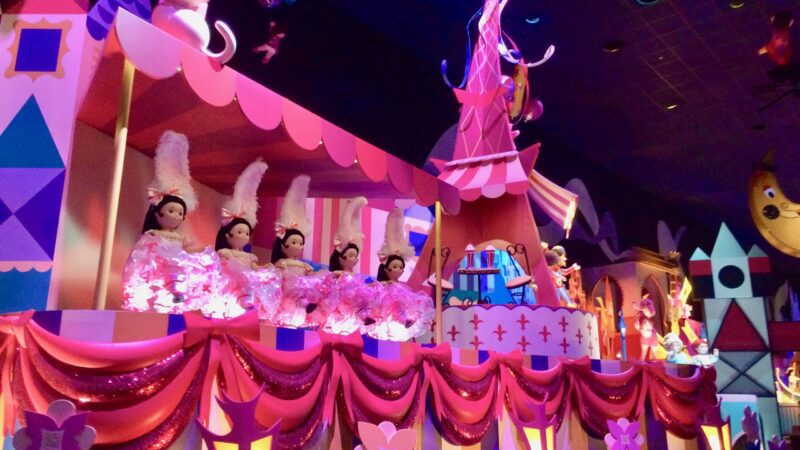Disney Dog and Pony Show

What is a Disney dog and pony show?
One of the simple joys of Disneyland and Tokyo Disneyland is Gadget’s Go Coaster. It’s a junior roller coaster, but it’s placed in a very creative setting. Gadget refers to the character Gadget Hackwrench from the Disney animated series Chip ‘n Dale: Rescue Rangers. Gadget has a gift for being resourceful by taking discarded and unrelated items and building something out of them. The entire roller coaster is built on that premise.




In the boarding area of the attraction, guests excited to board the coaster may miss a rejected blueprint.

Under the blueprint is a note from the desk of Gadget:

Apparently Gadget has to do a dog and pony for Mickey at 4 pm. What does this mean?
The expression “dog and pony show” relates back to small circuses and references the idea of making a pitch or over-staged performance in order to sway key decision makers in your favor. Usually it is a pejorative term reflecting the individual’s distaste over having to constantly promote and convince others through meetings. It also has come to reflect the waste of time spent in those events, rather than focusing on the task at hand.
At Disney, dog and pony shows are common. They were common for the development of Mickey’s Toontown. Imagineers had to make multiple meetings not just with Michael Eisner and senior officials, but with park operations, marketing, sales, revenue, finance, and so forth.
A considerable amount of time was spent in dog and pony shows–and they still are today. In fact, the original dog and pony show for the TV show this attraction was based on used characters from Disney’s film, The Rescuers. But Disney rejected that idea because they were already in a sequel to that film. Instead, Chip and Dale were added. Chip was given a sort of Indiana Jones look, and Dale was modeled in a casual Hawaiian shirt style similar to Magnum, P.I. Both of them had a competing crush on Gadget, and in their own way, were constantly doing a dog and pony show to win the affections of Gadget.
In this case, the dog and pony show for pitching this idea had value and merit. But it often doesn’t. Here are the challenges with dog and pony shows:
- They usually require the time and resources of the people who are most overwhelmed in making something a reality.
- Key people are often missing in the meeting, resulting in having to do the dog and pony show over and over again.
- Dog and pony shows are given at a time and place convenient to the audience, not to the individual(s) burdened with carrying out the project.
- They can often be more about “selling” people on the project rather than bringing people together for meaningful discussion, brainstorming and insight.
- Often decisions are made in those meetings that don’t really reflect the wisdom of really being in the trench of the project.
- People making the pitch often leave demoralized and burdened with more changes to be made to their work.
- The time and resources involved in planning, delivering and responding to these dog and pony shows are usually not factored into the cost of delivering the intended products and services.
It’s a small wonder that dog and pony shows are frustrating to those giving them. They impact the organization’s morale and even the actual success in carrying out a project. Here are some tips for making dog and pony shows worthwhile:
- Be clear about when buy-in and input is being given during the project.
- Be clear up front about the purpose of any dog and pony show being given.
- Center the event around the availability of those burdened with carrying out the project.
- Make certain everyone is in the room, so that additional dog and pony shows don’t need to be planned for later.
- Bring optimism, creativity and resourcefulness to the discussion, not just criticism and cynicism.
- Utilize time in the dog and pony show for people to identify what the attendees can do to help further support those who are tasked with making the project happen.
It’s important to get buy-in and feedback. Dog and pony shows can be a tool for doing that. But make sure that the experience is supportive to those burdened with making their deadlines.
Do you have to put on dog and pony shows in your organization? When do they succeed? What challenges do you face? How do you make them work for you?





